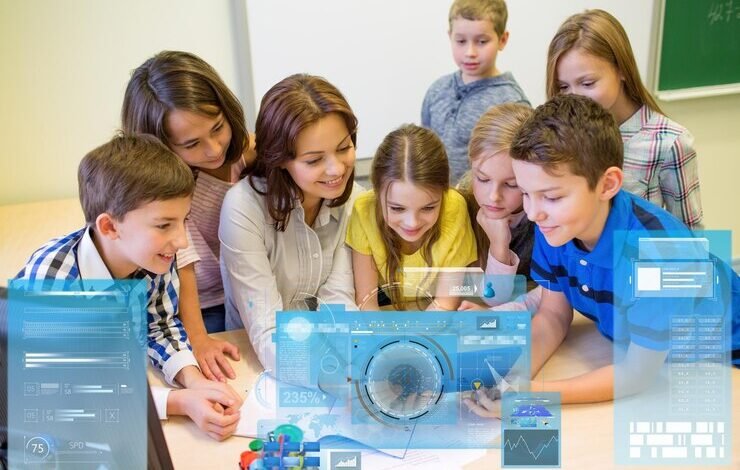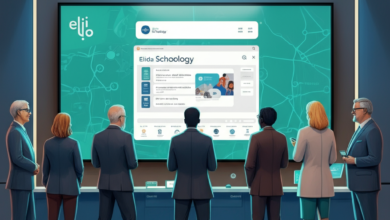The Role of EdTech in Revolutionizing Education

The convergence of technology and education has given rise to one of the most impactful revolutions in the learning world—Educational Technology (EdTech). Whether it’s enhancing engagement in the classroom, enabling personalized learning pathways, or fostering collaboration, EdTech is reshaping traditional teaching paradigms. This blog takes a closer look at how EdTech is influencing the future of education, sharing its historical evolution, advantages, challenges, and some truly inspiring success stories.
The Evolution of Teaching with Technology
While computers in classrooms might feel like a relatively recent phenomenon, the interplay between teaching and technology has been evolving for decades. The 1980s introduced rudimentary digital learning tools like LOGO programming for children, laying the groundwork for technology as an educational aid. Fast forward to the early 2000s, and the proliferation of interactive whiteboards and e-learning platforms such as Moodle and Blackboard made teaching more dynamic and accessible.
Now, we live in an age where high-speed internet, adaptive algorithms, and Artificial Intelligence (AI) have multiplied the possibilities in the world of education. Virtual classrooms, AR/VR technologies, and advanced content customization are no longer ambitions—they’re the reality.
The Benefits of Integrating EdTech in the Classroom
Bringing EdTech into the classroom does more than just modernize learning; it transforms it. Here’s how:
1. Improved Engagement
Technology introduces interactive and multimedia elements that capture students’ attention. Platforms like Kahoot! use gamification to turn learning into a fun, interactive experience.
2. Personalized Learning
EdTech tools like DreamBox and i-Ready tailor content to each student’s learning pace and style. Struggling learners receive more support, while advanced students can independently move ahead.
3. Boosted Collaboration
Cloud-based platforms such as Google Workspace for Education offer students and teachers a seamless way to work together, regardless of their location. Shared documents and instant feedback foster a collaborative environment.
4. Access to Diverse Resources
Forget outdated textbooks. EdTech opens the door to a treasure trove of constantly updated, high-quality resources. Websites like Khan Academy or Coursera make world-class education accessible from anywhere.
Overcoming Challenges in EdTech Adoption
Despite its many advantages, integrating EdTech is not always smooth sailing. Common challenges include a steep learning curve for some educators, limited funding, and concerns about data privacy.
Solutions to Consider:
- Professional Development
Teachers need continuous training to use EdTech effectively. Initiatives like Google for Education Certifications empower educators to integrate digital tools more seamlessly.
- Budget Management
Schools can start small with tools that offer free or low-cost trials before scaling up. Grant programs and government ed-tech subsidies can also help alleviate financial constraints.
- Data Security Policies
Prioritize platforms that comply with security and privacy standards like GDPR or FERPA, ensuring students’ data remains protected.
Trends in EdTech to Watch Out For
The EdTech industry is evolving at breakneck speed, with some cutting-edge trends set to redefine classrooms everywhere.
1. AI and Adaptive Learning
AI-powered tools, like Grammarly and Quizlet, are enhancing personalized learning by understanding students’ strengths and weaknesses in real-time and offering tailored feedback.
2. AR/VR for Experiential Learning
AR/VR platforms like Nearpod and Google Expeditions allow for immersive experiences, like exploring the Great Barrier Reef or walking with dinosaurs—right from the classroom.
3. Gamification and Social Learning
Gamified platforms and peer-learning communities are helping students become active participants in their educational journeys.
4. Focus on Digital Equity
Bridging the digital divide remains a strong trend, with efforts to provide students with access to devices and reliable internet in underserved communities.
Best Practices for Implementing EdTech
With the right approach, EdTech can add unmatched value to education. Here are key strategies for success:
- Define Goals
Before implementing new tools, identify the specific challenges you aim to overcome (e.g., improving student participation or simplifying progress tracking).
- Start Small
Begin with one or two versatile platforms. For example, tools like Flipgrid, which facilitates video discussions, can address multiple classroom objectives.
- Encourage Feedback
Continuously involve students and teachers in the evaluation of EdTech tools. Their insights ensure you focus on the solutions that work best.
- Measure Impact
Track outcomes like improved grades, participation, or reduced teacher workload to quantify the benefits of new technologies.
Real-Life Case Studies
EdTech isn’t just theoretical—it’s transforming schools and classrooms around the world.
Success Story #1 – P.S. 42 Elementary School, New York
This Title 1 school integrated Google Classroom in 2019. Teachers reported a 25% improvement in assignment submission rates and 35% more engagement during lessons, thanks to simplified workflows for both educators and students.
Success Story #2 – Samaschool, Kenya
By using solar-powered tablets loaded with digital learning resources, students in remote areas accessed high-quality education even without traditional infrastructure, achieving higher literacy rates within two years.
Success Story #3 – British International School, Abu Dhabi
After incorporating AR/VR tools for science, annual STEM scores jumped by 30%. Students loved dissecting 3D models of cells and experimenting in virtual chemistry labs.
Driving Education Forward with Technology
The integration of technology into education promises to transform learning experiences at scale, equipping students with the skills needed for the future. However, success depends on thoughtful planning, ongoing training, and collaborative implementation.
Educators who seize the potential of EdTech not only enrich their classrooms but prepare their students for a future defined by technology and adaptability. Whether you’re an educator, administrator, or enthusiast, there’s never been a better time to explore the possibilities of technology in education.



